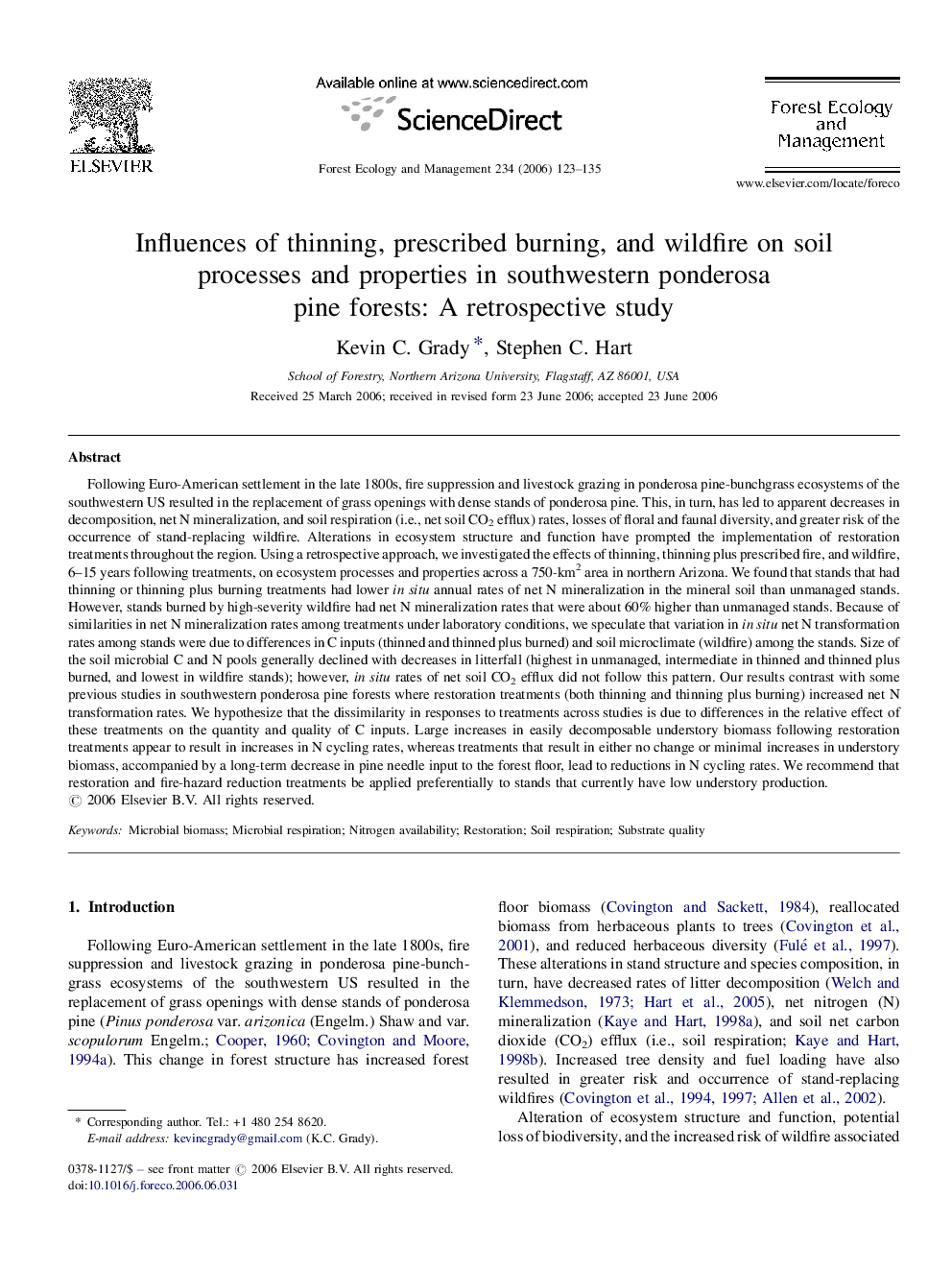| Article ID | Journal | Published Year | Pages | File Type |
|---|---|---|---|---|
| 90199 | Forest Ecology and Management | 2006 | 13 Pages |
Following Euro-American settlement in the late 1800s, fire suppression and livestock grazing in ponderosa pine-bunchgrass ecosystems of the southwestern US resulted in the replacement of grass openings with dense stands of ponderosa pine. This, in turn, has led to apparent decreases in decomposition, net N mineralization, and soil respiration (i.e., net soil CO2 efflux) rates, losses of floral and faunal diversity, and greater risk of the occurrence of stand-replacing wildfire. Alterations in ecosystem structure and function have prompted the implementation of restoration treatments throughout the region. Using a retrospective approach, we investigated the effects of thinning, thinning plus prescribed fire, and wildfire, 6–15 years following treatments, on ecosystem processes and properties across a 750-km2 area in northern Arizona. We found that stands that had thinning or thinning plus burning treatments had lower in situ annual rates of net N mineralization in the mineral soil than unmanaged stands. However, stands burned by high-severity wildfire had net N mineralization rates that were about 60% higher than unmanaged stands. Because of similarities in net N mineralization rates among treatments under laboratory conditions, we speculate that variation in in situ net N transformation rates among stands were due to differences in C inputs (thinned and thinned plus burned) and soil microclimate (wildfire) among the stands. Size of the soil microbial C and N pools generally declined with decreases in litterfall (highest in unmanaged, intermediate in thinned and thinned plus burned, and lowest in wildfire stands); however, in situ rates of net soil CO2 efflux did not follow this pattern. Our results contrast with some previous studies in southwestern ponderosa pine forests where restoration treatments (both thinning and thinning plus burning) increased net N transformation rates. We hypothesize that the dissimilarity in responses to treatments across studies is due to differences in the relative effect of these treatments on the quantity and quality of C inputs. Large increases in easily decomposable understory biomass following restoration treatments appear to result in increases in N cycling rates, whereas treatments that result in either no change or minimal increases in understory biomass, accompanied by a long-term decrease in pine needle input to the forest floor, lead to reductions in N cycling rates. We recommend that restoration and fire-hazard reduction treatments be applied preferentially to stands that currently have low understory production.
